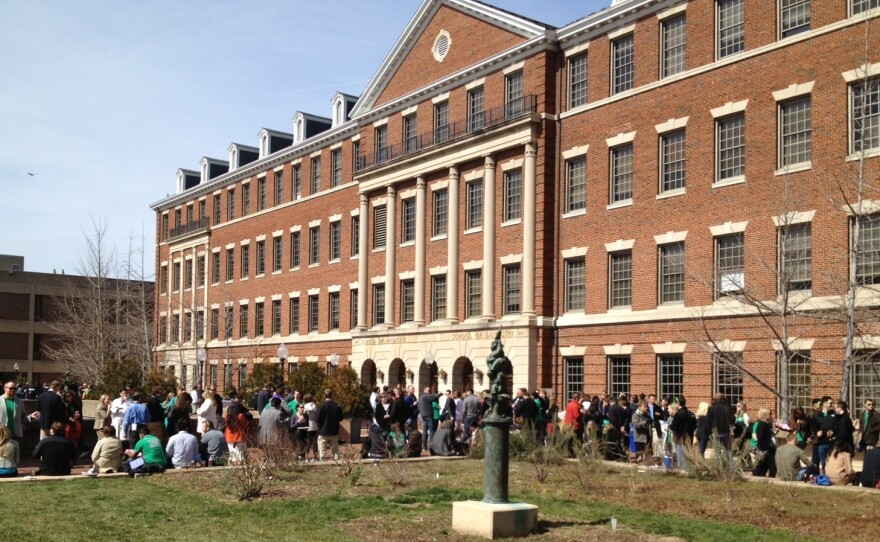Match week is the nail-biting time of year that haunts and tantalizes fourth-year medical students with dreams of residency programs. It culminates with the students learning at Friday at 1 p.m. if — and where — a hospital wants to train them to become full-fledged doctors.
Kristin Huntoon, 34, at New York Institute of Technology College of Osteopathic Medicine, tells Shots the past few months have been nerve-wracking. The fourth-year medical student would notice herself thinking about residency programs while she was in class, or during clinical rotations.
"I had to apologize to my patients a few times in the last few months," she says. "I was so distracted, I would miss what they said."
On Monday, Huntoon, who previously earned a Ph.D. in molecular biology, found out that she had been matched with a neurosurgery program. But it wasn't until Friday that she learned which one: Ohio State University. She was one of 25,400 out of 40,000 students who matched to first-year residency programs this year – a rate that was slightly higher than in 2012.
This year's match had more applicants than any previous year because of more medical schools opening and larger graduating classes. Within the group of students who matched to a program, there were almost 800 more foreign-born, international medical school graduates than last year, and about 300 more osteopathic medical school graduates.
Lately, more graduates have been landing spots in primary care residency programs, including family practice and pediatrics. Mona Signer, executive director of the National Residency Matching Program, says this may be linked to the growing need for primary care and possible shortage in the field.
Still, Peter Gliatto, an associate dean and professor at the Icahn School of Medicine at Mount Sinai, says sorting through all the options to find the right match can be tough for students. He notes there isn't enough data on residency program rankings, nor do applicants have enough opportunities to talk to former residents at the institutions where they're applying.
"There's still a lot of uncertainty around the process" for the applicants, he says.
But even with the palpable anxiety the matching process inspires in medical school hallways, Signer says it is meant to help students.
The match this year included a new "all in" policy, which required all residency programs to enter their positions into the match rather than allowing them to reserve spots or extend individual offers beforehand. Signer says she is confident the match process puts students at an advantage – allowing them to have the same ability to rank their favorite programs as hospitals have to choose the best applicants.
Students entering the matching process first apply to residency programs and go through interviews. Then they rank their preferred programs in an algorithm developed in 1952 by Nobel Prize winning economist Alvin Roth. The programs also enter their preferred applicants in the algorithm, which then finds matches between both sets of rankings.
Those who don't match the first day of match week enter a process known as the Supplemental Offer and Acceptance Program, or SOAP, introduced last year. SOAP matches students without a program to unfilled positions until there are very few residency spots left over. Students who do not find a match during SOAP usually wait a year and reapply to the match.
The algorithm is designed to keep students from gaming the system. For instance, students who apply to only one program could hurt their chances of getting any match.
But students like Jessica Lennon, a graduate of St. George's University School of Medicine in the Caribbean, says that she encouraged other students to do what she had done: Focus on what they truly wanted to practice. And she says students should consider location, the population that a hospital serves, opportunities for medical research while training, and a staff with particular skills a student may want to acquire.
"If you put your trust in the process, I think it works," Lennon says.
On Friday Lennon, who matched in the obstetrics-gynecology specialty, found out that she would be heading to St. Luke's University Hospital in Bethlehem, Penn.
Copyright 2023 Kaiser Health News. To see more, visit Kaiser Health News. 9(MDAzMjM2NDYzMDEyMzc1Njk5NjAxNzY3OQ001))





